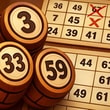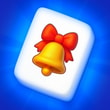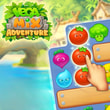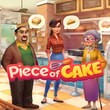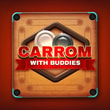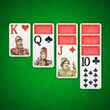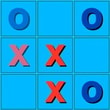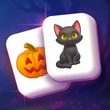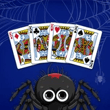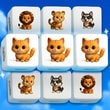🎴 First Deal, Fast Heartbeat
The shuffle sounds like rain on a tin roof, and suddenly you’re holding a clumsy rainbow that could be victory or a public meltdown. ONU plays like a conversation spoken in colors: red to red, seven to seven, skip to silence. You watch the discard pile pulse, waiting for your turn, and you already know which card is going to make a friend stop talking for two full seconds. That’s the rush here—simple rules that somehow create the exact kind of drama you can measure in raised eyebrows.
🔄 Reverse Psychology (Literally)
A Reverse card is a tiny steering wheel. Drop it and the table’s rhythm spins on its heel, handing the mic to players who were mentally on vacation. The trick is timing. Reverse too early and you save the person you were trying to sink. Reverse late and you might watch your perfect setup dissolve into someone else’s highlight. The sweet move is a reverse into another reverse—like a wink and a slapstick spin—sending the turn back to you so you can follow with something mean or merciful, depending on what your soul is made of today.
⏱️ Skip: Silence With Style
Skip is a polite door slam. Played well, it’s not just denial; it’s tempo. Skipping the player with two cards left buys your side of the table a breath to reorganize. Skip chained into Skip turns the table into a moving walkway you’re the only one riding. You’ll start to feel the rhythm: play Skip when the discard color is bad for you, or just before a teammate (in pairs) who can push the advantage. It’s small power, big attitude.
➕ Draw 2 Diplomacy
Draw 2 isn’t cruelty; it’s negotiation dressed as cardboard. When you slap one down, you’re not only adding weight to someone’s hand—you’re asking the next player a question. Can they stack another Draw 2. The table tilts with every yes, and suddenly someone is hauling a brick of cards that makes their elbow shake. If your group plays stacking rules, the smartest plan is to hoard one Draw 2 like a fire extinguisher. If they don’t, use it as a cymbal crash to reset momentum when the color turns hostile.
🃏 Wild + Color: Rewriting the Sentence
A basic Wild is punctuation. You change the color and steer the story. Use it to escape bad rivers of blue when you’re drowning in green, or to set up your teammate in co-op modes. Play Wild after a Skip to lock the room in your color for one more beat. The stealthy move is to choose a color you don’t actually have when your hand is wide—people will misread your plan and feed you cards you’re secretly collecting.
💥 Wild Draw +4: The Nuclear Wink
Yes, the +4 is the meme. But it’s also a test of character. In bluff-allowed rules, it’s a poker move; you must be color-stuck to play it, and someone can challenge. If they do and you were clean, they eat six like a hero in reverse. If you lied, you’re the one fishing. The best timing is when your next two turns would be awkward. Drop the +4, choose a color that unlocks your midgame, and breathe while the table processes their emotions in HD.
🧠 Hand Craft: Color Economy & Number Math
Good play is less about miracles and more about keeping options alive. Track your color counts: three reds beats one lonely yellow every time. Break duplicates first so future draws widen your range. When two opponents are low, stop matching their color even if it’s easy; force a shift that is inconvenient to them and comfortable for you. Keep at least one utility—Skip, Reverse, Draw—because a naked hand is honest and honesty gets punished.
😏 Bluffing, Tells, and “UNO” Etiquette
People reveal themselves with how quickly they slam a card or how they stall before calling UNO. A micro-pause on a color change means they don’t love it. A grin after drawing usually means they top-decked something spicy. Call UNO out loud before you forget; missing it and getting penalized is like tripping over your own shoelace at the finish line. Also, wild social tip: apologize before you drop a +4, not after. It’s funnier, and somehow it hurts less.
🎚️ House Rules, Chaos Levels
ONU on Kiz10 offers the clean core loop, but your table vibe does the rest. Some crews allow stacked Draw 2 and +4 like a card avalanche; others keep it classic, one punishment at a time. Decide if jumping in (same card, any turn) is live— it turns the room into a reflex test with joyful interruptions. Decide if you can end on wilds. Decide whether “7-0 swap hands” is part of the party. Tuning these dials changes the game from measured chess to full cartoon in seconds.
⚡ Pacing, Momentum, and The Last Card Problem
Speed is a weapon but not a plan. Fast turns help you avoid feeding tells, yet the endgame demands grace. With two cards left, play for coverage, not drama; leaving yourself one flexible card is better than flexing with a perfect Skip you can’t follow. If someone else calls UNO, switch the color if you can. If you can’t, change the rhythm—Skip them, Reverse away from them, or force a draw. The last card isn’t a victory; it’s a trap waiting to spring on the wrong color.
🤝 Duos Energy & Soft Teamwork
In partner variants, the table becomes a secret handshake. Avoid starving your teammate’s color unless you’re setting a trap on purpose. Use Reverse to funnel turns toward your partner’s hot hand. If you smell they’re holding a finisher, spend your utility to stall the sharks: Skip threats, flip the color to their lane, and guard the tempo like a bodyguard in sunglasses. The best feeling is lining up a Skip → Reverse → Color Change so they can drop the last card with cinematic disrespect.
🎧 Feedback, Sound, and Feel
Every drop lands with that sweet plip, a soft arcade comfort that keeps your head clear. The pile flashes, the color rings your eyes, and the UI gives you just enough friction that decisions feel intentional, not twitchy. The satisfaction isn’t only the win screen; it’s the tiny bloom of relief when a perfect Wild lands and the table groans in four different dialects.
🪄 Micro-Tips You’ll Swear You Invented
Hold a Reverse facing the player who hurts you most. Don’t burn all your wilds early; one saved wild turns a dead end into a runway. If you must feed an opponent the color they want, do it with a number you’ve duplicated so your next turn is still wide open. If your hand is mostly one color, bait a change by playing the minority—people will assume you’re dry and rescue you by accident.
🌐 Why It Pops on Kiz10
Card games live on rhythm, and Kiz10 treats rhythm like law. Quick lobbies, snappy turns, instant rematches—your momentum doesn’t evaporate between hands. Inputs feel crisp, visuals stay bright, and the round-to-round loop keeps your table energy warm. You come for a quick match and end up in a best-of-five with a personal grudge against a pixelated avatar you now respect.
🚀 Last Card, Deep Breath
Pick a color with intention, not hope. Save one utility for emergencies. Call UNO like you mean it. If the table goes feral, smile—chaos is part of the charm. ONU makes tiny choices feel like plot twists, and that’s why it’s perfect when you want strategy light enough to laugh at and sharp enough to brag about. Deal in on Kiz10.com, shuffle that small rainbow, and let a simple rule set turn into a story you’ll retell with hand gestures and a grin.
 Durak: Classic
Durak: Classic 





















